A few seasons ago both Hull City and Stoke City were entertaining Premier League crowds, but this time they met in the division below: the Championship. Stoke wanted to better their results when they came to the KC Stadium in Kingston-upon-Hull, but the home side were quite effective at earning a 2-0.
In this tactical analysis, we will look at three tactical trends during this Championship game. We will have a look at how Hull City’s 4-4-1-1 was set up, Stoke’s dominance and Hull’s effectiveness on the counter-attack.
Teams
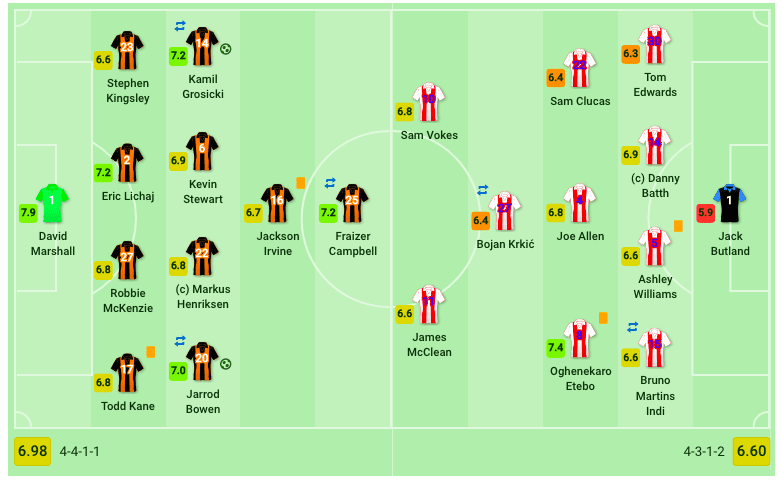
The home time started in a rather defensive 4-4-1-1 formation. Hull had a solid back four and a solid midfield, with Jackson Irvine and Fraizer Campbell playing in front of them. Stoke started in a more balanced 4-3-1-2 formation with Sam Vokes and James McClean as the two strikers, supported by Bojan Krkic. It was expected that Stoke would have possession of the ball and try to attack, while Hull would have to resort to defending and possible counter attacks.
Hull’s 4-4-1-1
The hosts expected to have to defend a lot against Stoke City and opted for a quite conservative 4-4-1-1 formation. The idea was to have a solid defence and frustrate the opposition.
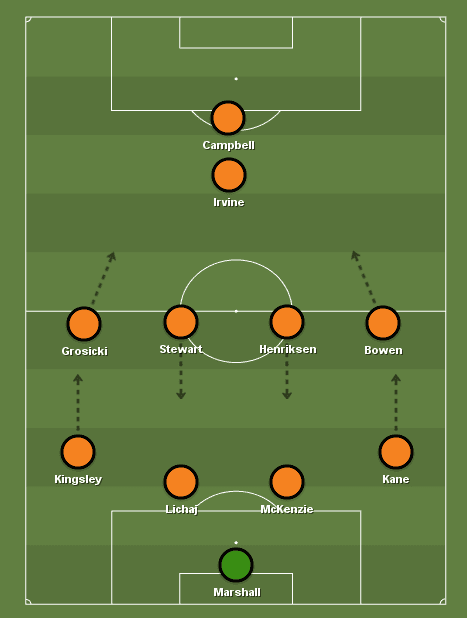
When the home side were in attacking mode, both full-backs made runs down the line. Wide midfielders Grosicki and Bowen moved a bit more towards the centre, while Kevin Stewart and Markus Henriksen retained possession.
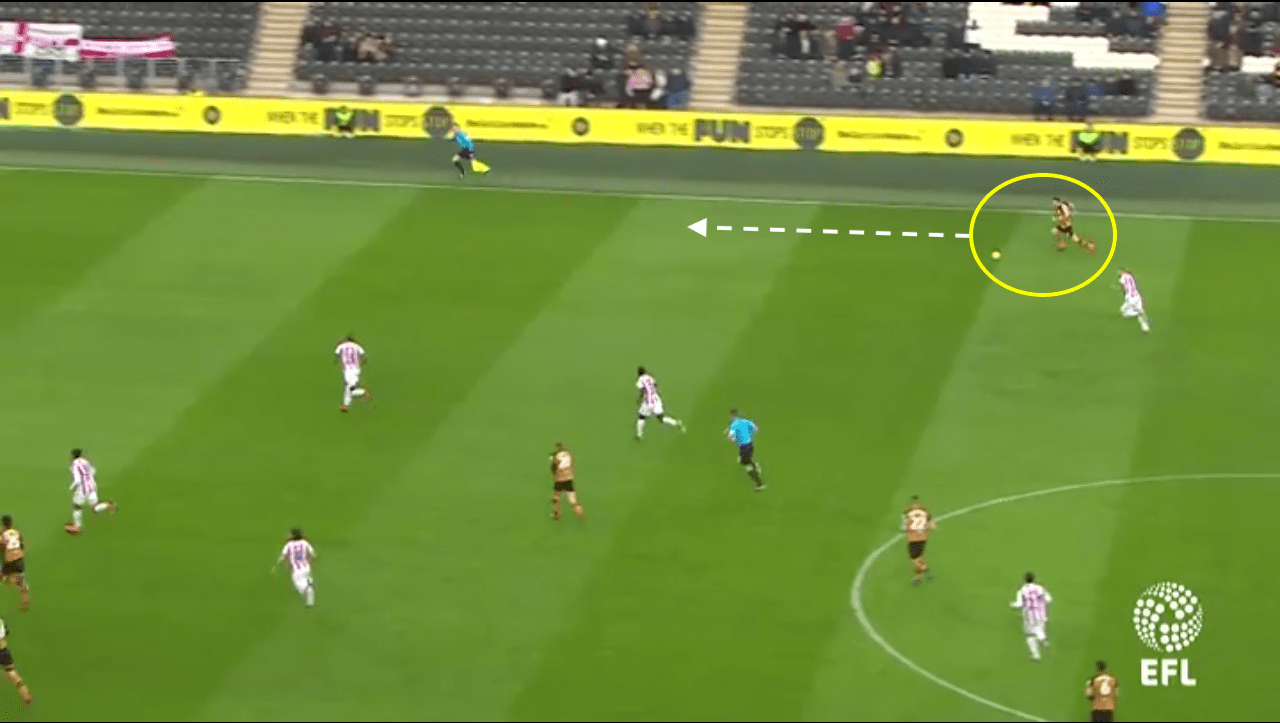
In the above image, Kane is able to make a run down the line because the wide midfielders have moved more centrally. Kane and Kingsley’s runs would invariably end with attempted crosses towards the strikers.
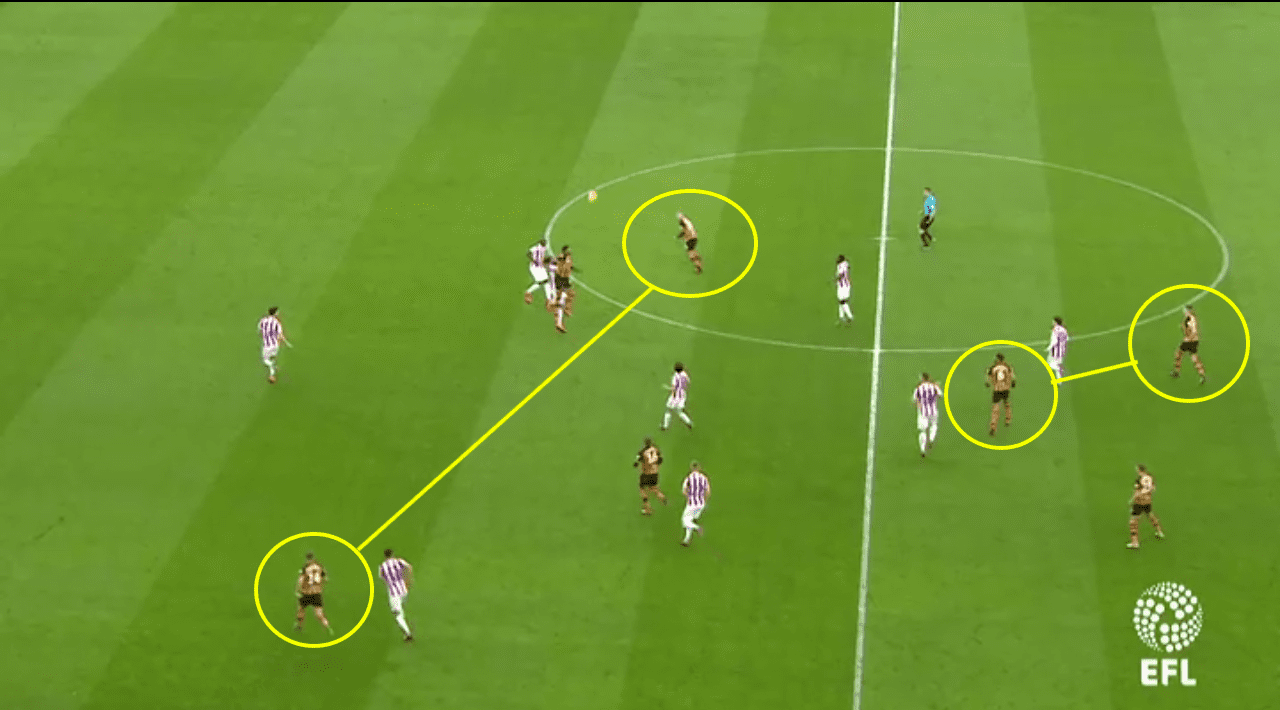
As you can see above, the midfielders had diverse roles when Hull City attacked. Grosicki and Bowen joined the attack with the strikers, while Stewart and Henriksen had a more controlling role. They were the first defenders in case Stoke City recovered the ball and moved forward.
In defence the midfield also played a huge role. The central midfielders dropped back to assist by enhancing their numbers, making it hard for the visitors.
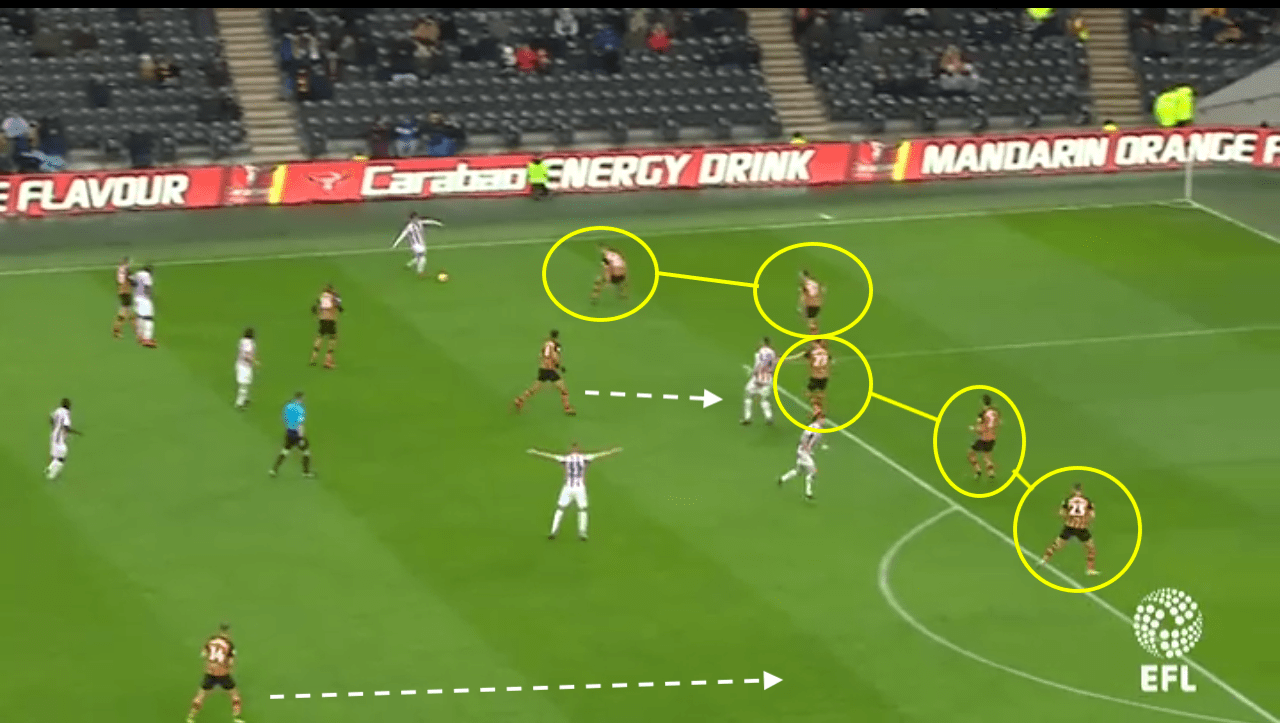
On paper Hull City played four defenders at the back, but when under attack they seemed to have a different defence. As you can see above they played five defenders with two midfielders closing, which meant that they had seven players in defence when Stoke City were attacking.
Stewart and Henriksen dropped back to support the defence along with one of the wide midfielders in Grosicki or Bowen. Although Stoke City had the ball most of the time, Hull managed to frustrate them with a solid, well-organised defence as displayed above.
Dominant Stoke
The Championship is no Premier League and that is something Stoke City have experienced as well. Expected to go for the top places, they wanted to play a possession-based style of football and create a lot of chances. This was the same concept that they wanted to apply in this game.
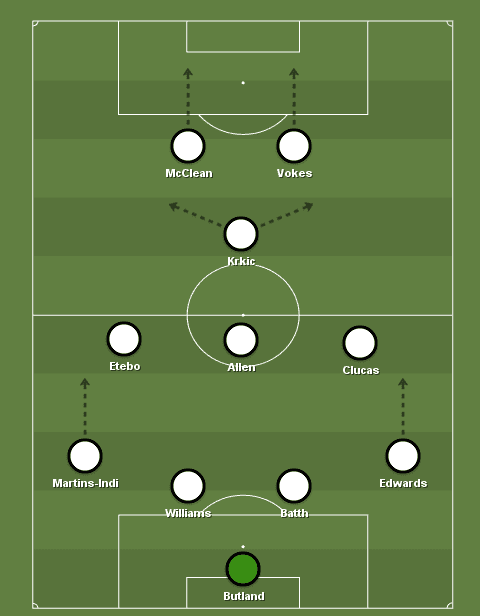
Stoke wanted to play an attacking style of football. From their ball possession, they wanted to create many opportunities to score. The statistics support that they were dominant on the pitch. They had 60.4% of the ball and made 500 passes, of which 400 were successful. By comparison, Hull City only made 326 passes of which 218 reached their destination. They managed to get nine shots from their attacks of which two were on target.
It didn’t help that Vokes also missed a penalty just after Hull went 1-0 up. They wanted to attack with full-backs that made runs down the line and a very flexible Krkic, who would assist the full-backs in getting the crosses in.
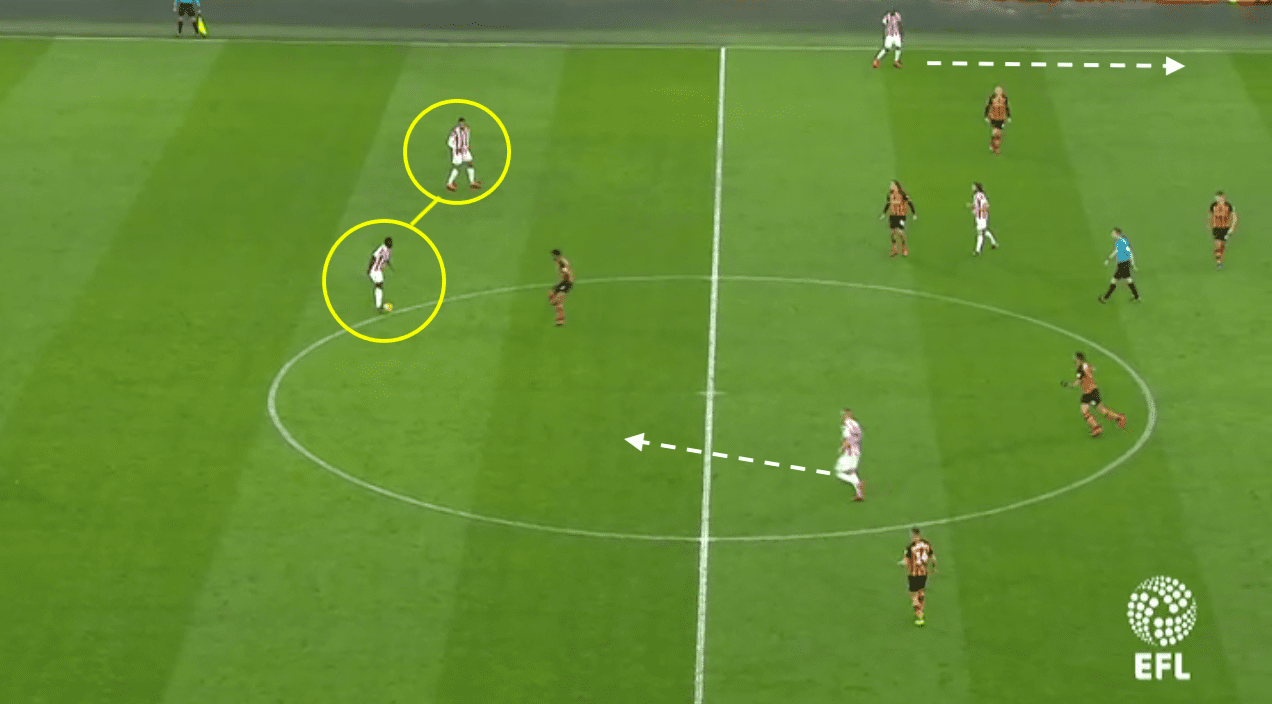
Stoke had a very recognisable game plan. They started their attacks with their centre-backs who played high up their own half. The guests had two options going forward. The Potters could either play the ball to their midfielders, or they could opt for the full-backs who made runs down the line.
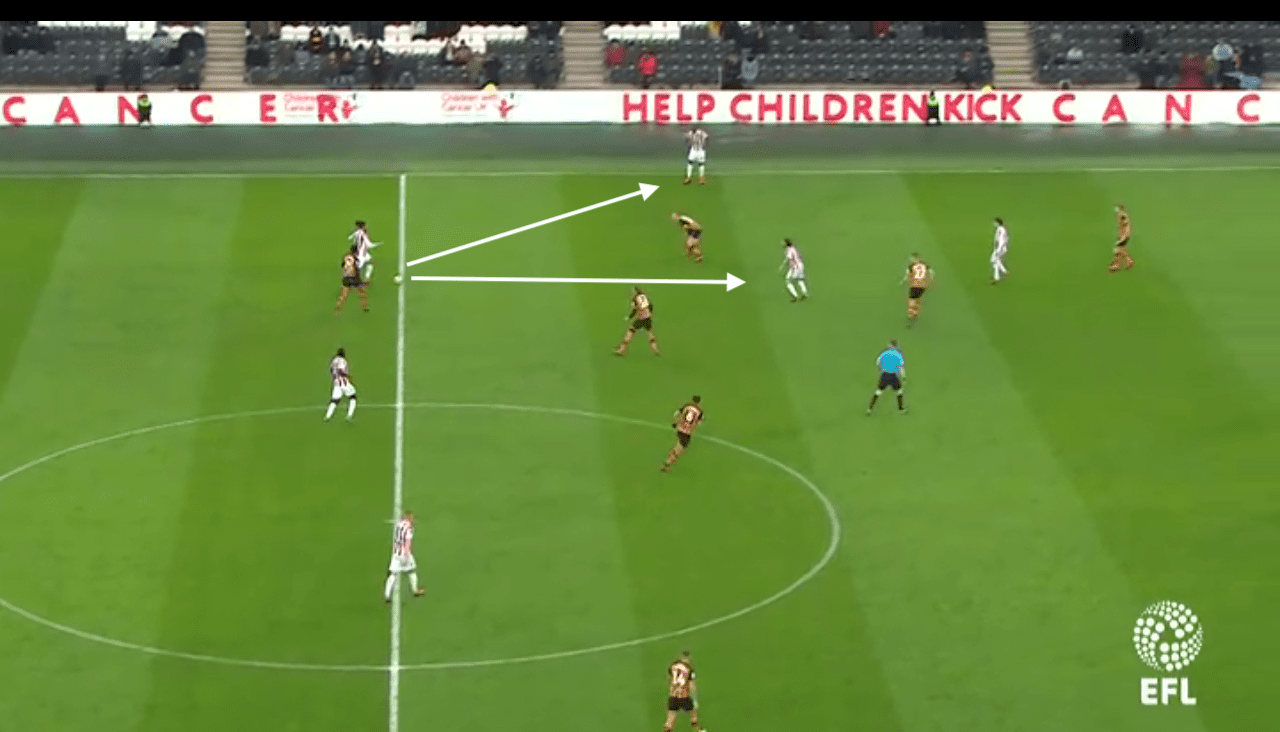
Williams has two passing options going forward; either Allen, or down the line to Martins-Indi. He opts for the choice down the line, which poses as a greater threat to the Hull defence.
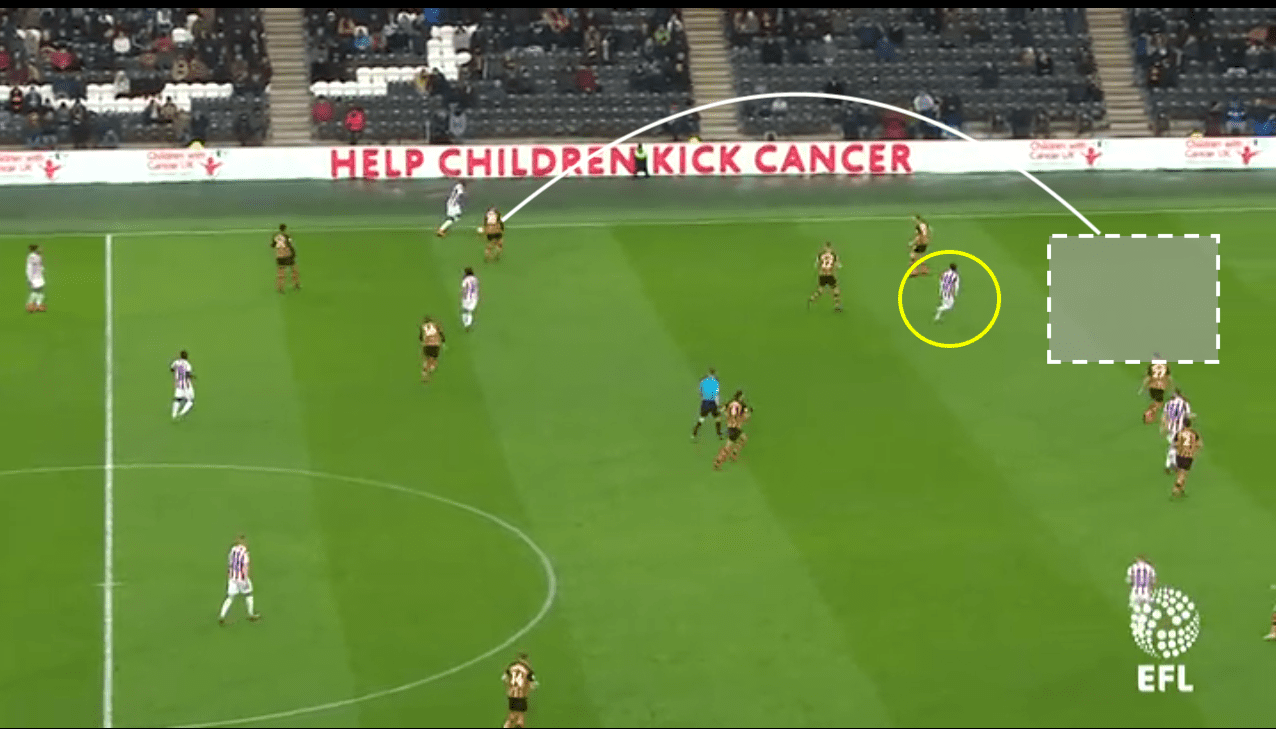
Martins-Indi looks for Krkic, who makes the run down the line. From this position Krkic tried to find a chance via the strikers McClean and Vokes, as you can see below.
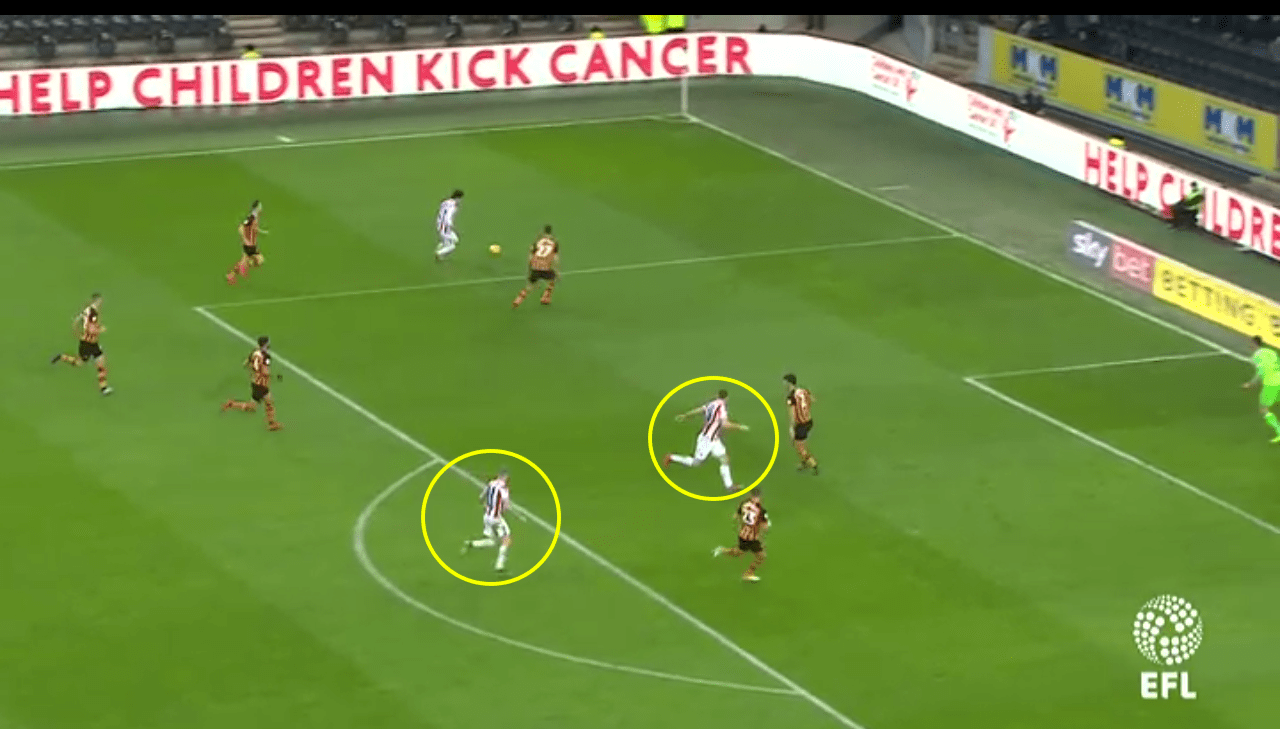
Effective Hull City on the break
However dominant, it wasn’t Stoke City who walked away with the points. A very effective Hull won thanks to their quick counter-attacks. One such example was the second goal in the 63rd minute.
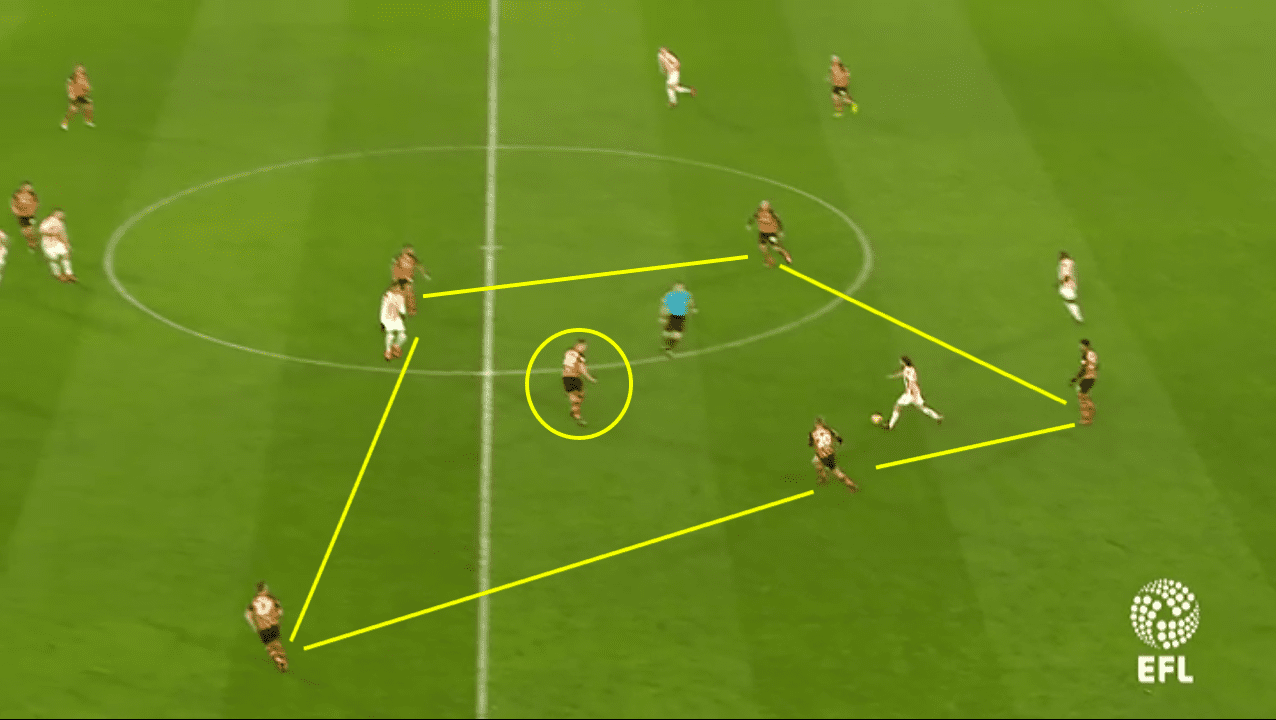
After an hour Hull started to put more pressure on the Stoke midfield and defence. As you can see above, they have more numbers higher up the pitch. This leads to recovering the ball in their own half and setting things in motion.
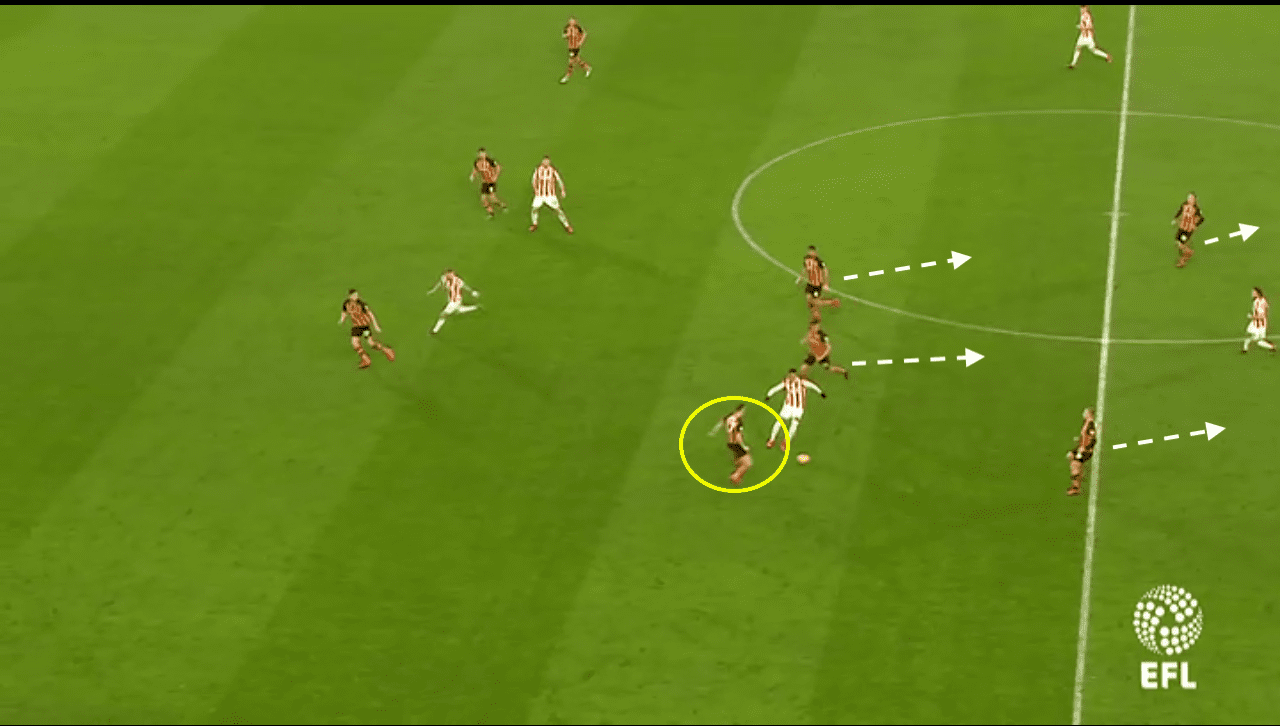
After recovering the ball, the movement of the players is quick. They want to get as many men forward to punish their opponent’s mistake and create a chance.
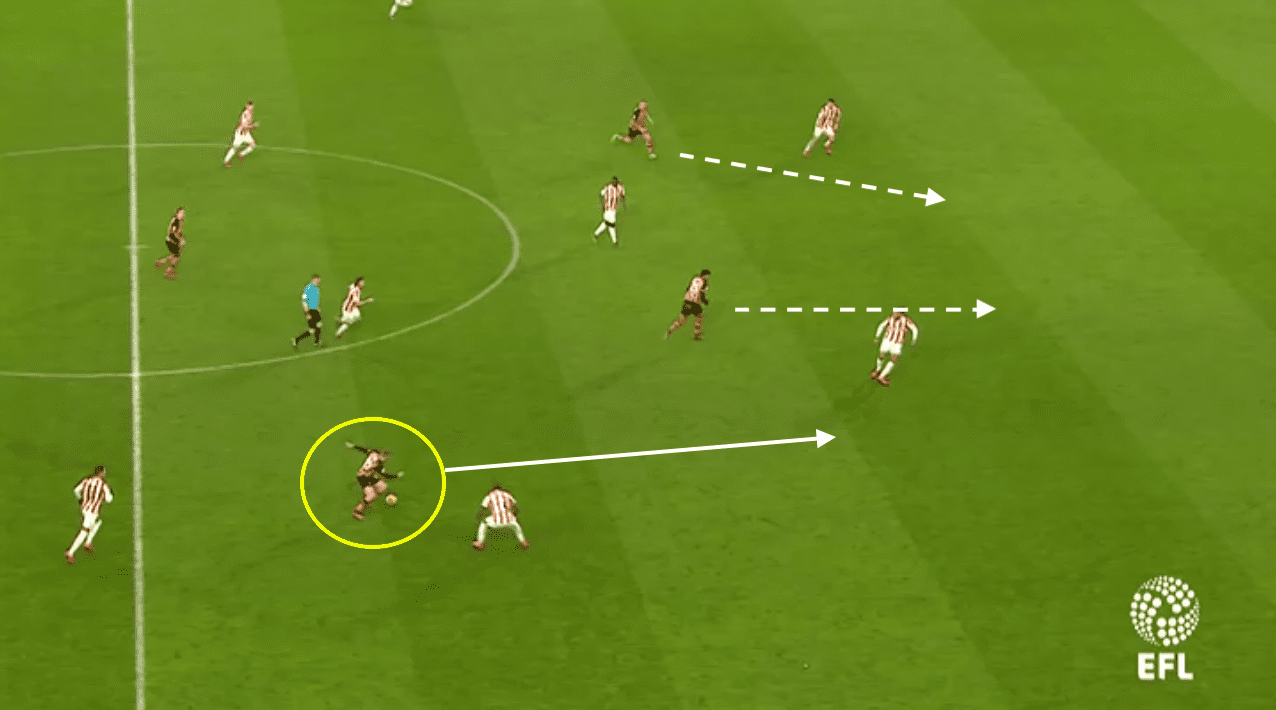
The counter-attack style is characterised by the direct passing of Hull City. The two strikers make runs into the middle as Henriksen passes the ball.
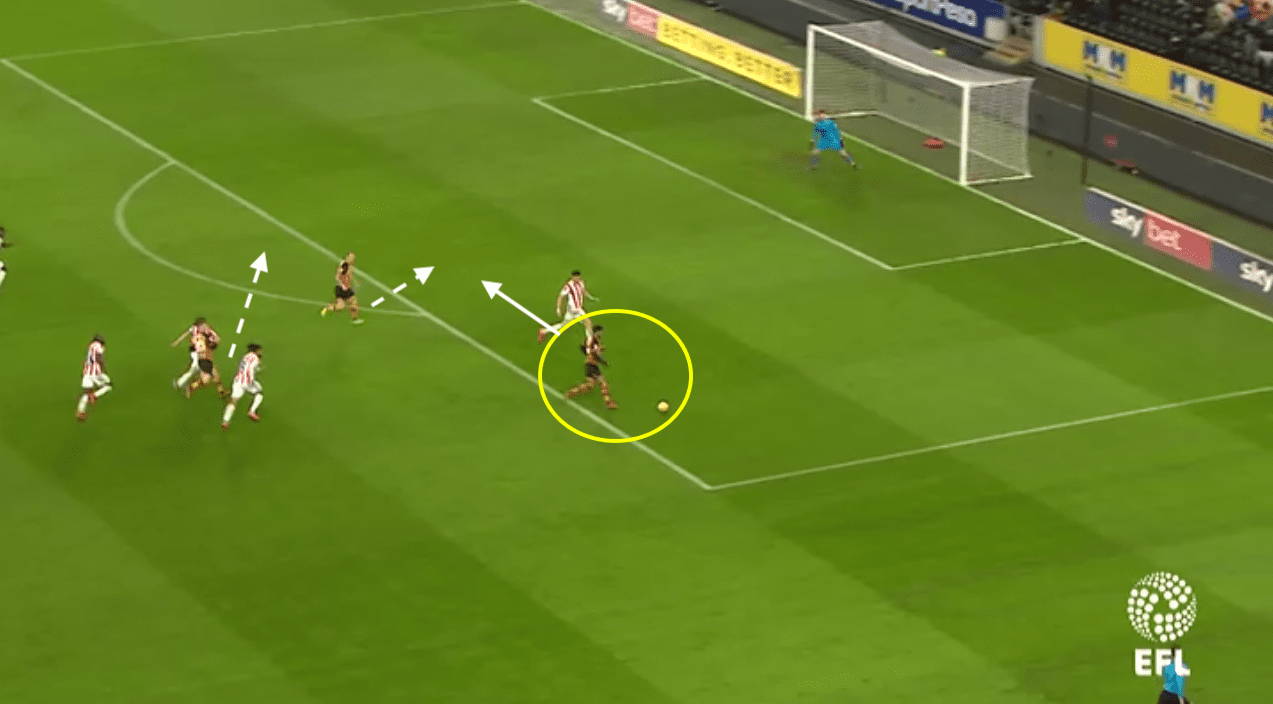
Campbell carries the ball into the penalty area before supplying Grosicki to seal a 2-0 win for Hull. The speed of their counter-attacks surprised Stoke City, and made life easier for Hull.
Final thoughts
It was really interesting to see how both teams had different formations and approaches to the game. Stoke dominated possession and looked better going forward, but Hull’s seemingly conservative formation made the most of Stoke’s risky game plan. They exploited Stoke City’s errors and got the win through a decent free kick and a rapid counter-attack.
If you love tactical analysis, then you’ll love the digital magazines from totalfootballanalysis.com – a guaranteed 100+ pages of pure tactical analysis covering topics from the Premier League, Serie A, La Liga, Bundesliga and many, many more. Buy your copy of the January issue for just ₤4.99 here, or even better sign up for a ₤50 annual membership (12 monthly issues plus the annual review) right here.

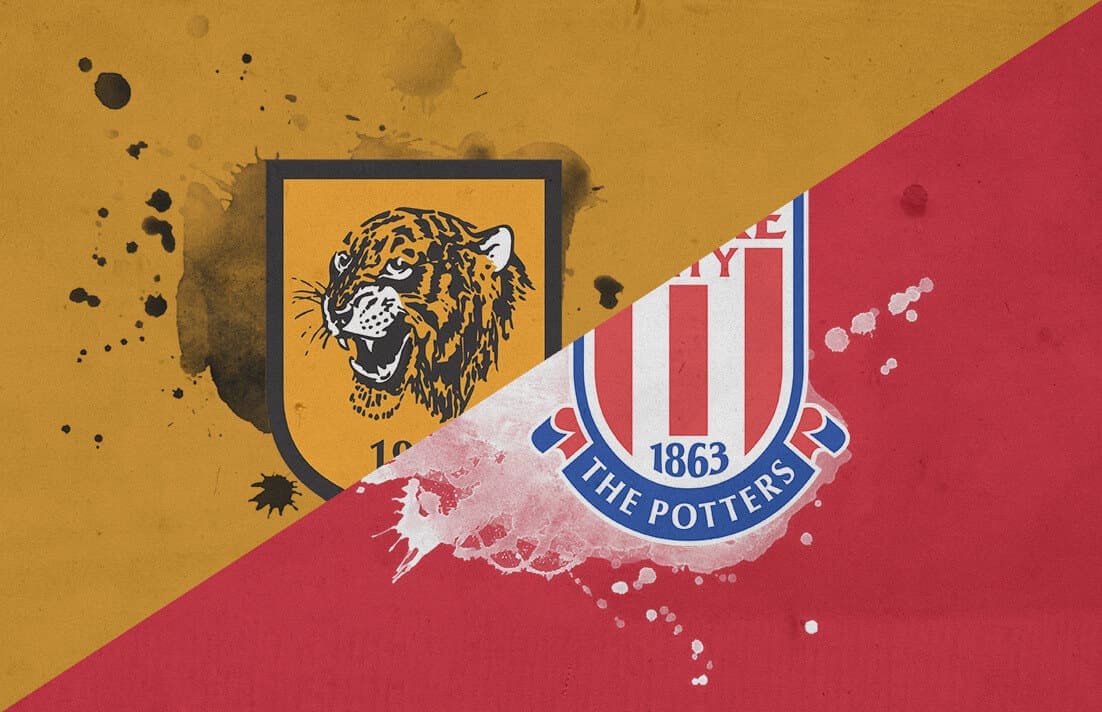



Comments